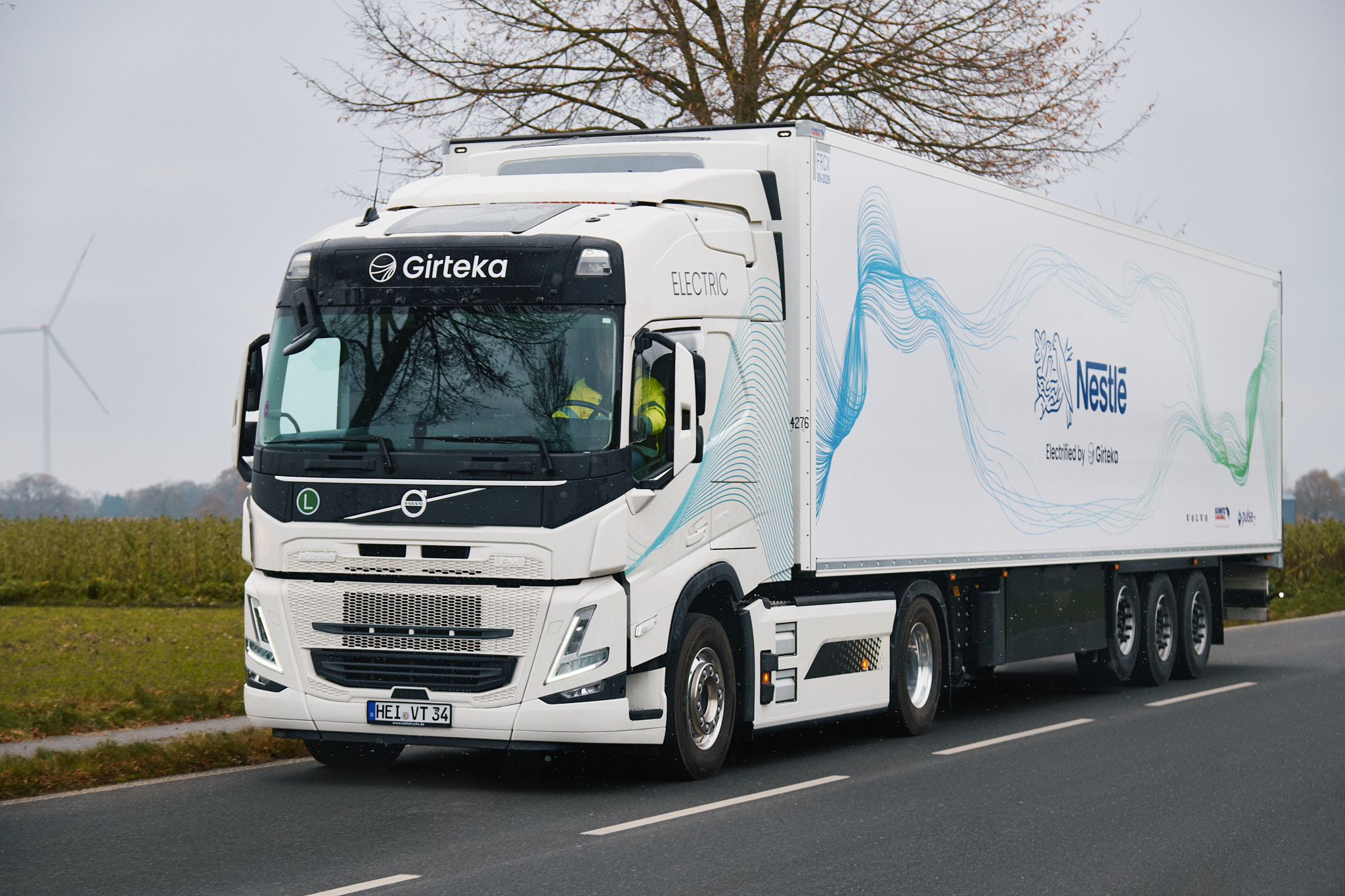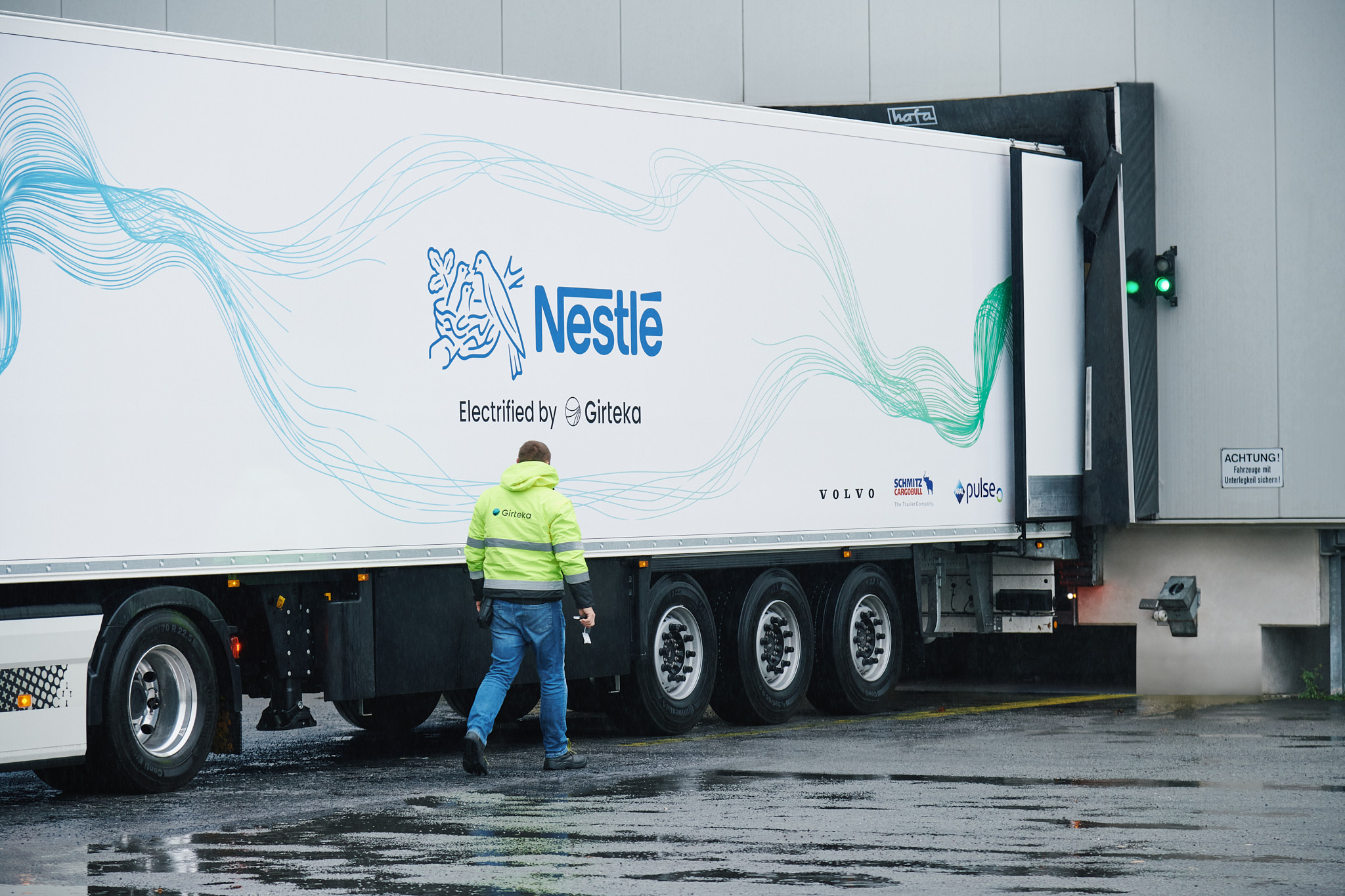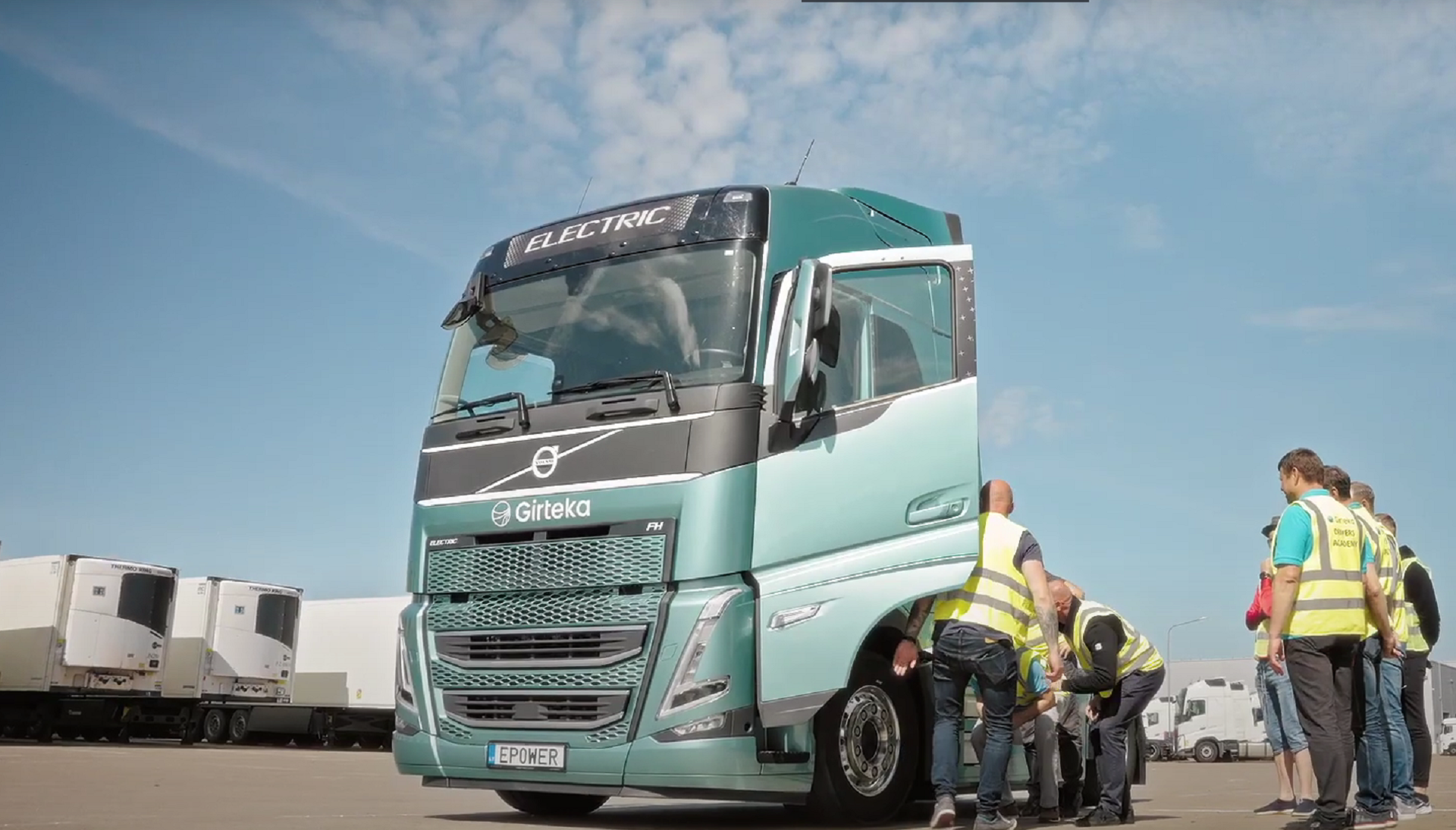In the rapidly evolving world of logistics, the shift towards sustainable transport solutions is more crucial than ever. As companies lad the charge with the implementation of battery electric vehicles (BEVs), understanding the real-world impact of these innovations is essential. Who better to provide this insight than the drivers themselves, who are at the forefront of this transformation?
In this interview, we hear directly from Arvydas, an experienced Girteka driver, who has been working for the company for over 12 years. He shares his firsthand experiences on driving a fully electric truck and trailer. His insights shed light on the practicalities, challenges, and immense potential of BEVs in modern logistics.
How much experience do you have with driving an electric truck? What was your overall impression of BEV trucks from that experience?
“I have driven two electric trucks and one electric trailer in a variety of conditions, including normal and city traffic, as well as in winter. We covered significant mileage testing these new trucks. They surprised me and everyone around. People often took pictures, asked about the experience, and uploaded videos of our Girteka electric trucks on Facebook. The trucks are incredibly quiet, with no engine noise. People just could not believe that the truck was so quiet, with no engine sound – you could barely hear it when it pulled up. Everybody is used to trucks being loud. The driving experience is quieter, smoother, and more comfortable, allowing for better concentration. It is much more enjoyable to drive these modern, improved vehicles, and leave a lasting impression for everyone.”
Was it hard to get used to driving such a truck? Is there any special training needed?
“I have been driving Volvo and other manufacturers’ trucks that Girteka provides for many years, so there was not much difference. The interior and controls are identical to conventional trucks. The main difference is in starting the machine and managing the lack of engine noise and vibration. I also had to learn some new symbols specific to electric trucks.”
How about charging? Is the whole charging process a smooth procedure?
“Charging comes with some challenges, primarily due to the lack of suitable charging stations for trucks. We need more powerful stations than those available for cars, ideally 300 kW. Unfortunately, the actual power of the station often falls short, and issues like non-functional stations or stolen wires add to the difficulty. The infrastructure needs improvement, but it is progressing. Currently, our routes are planned around charging stations, which is easily manageable with experience.”

The idea is to have the charging done during the mandatory rest breaks. Do you find that convenient?
“Yes, it is very convenient. During the charging time, we can complete paperwork, eat, walk, exercise, or simply rest. That adds a lot of comfort and flexibility for drivers. Planning rest breaks and charging based on station availability is crucial. Especially since charging times vary depending on the station’s capacity. I expect future improvements in station capacity and charging times.”
Overall, how does driving a BEV truck compare to driving a conventional diesel truck? What are the benefits and disadvantages?
“Electric trucks offer several advantages over diesel trucks. Apart from the mentioned ones, they have fewer technical issues since they lack many components prone to failure in diesel engines. There is also no risk of fuel theft, a common problem with diesel trucks. The main drawback is the current infrastructure’s inadequacy and occasional charging station malfunctions. Additionally, extreme temperatures in winter or summer can affect battery performance, requiring careful energy management.”
Are there any particular features of the truck that you found interesting?
“One surprising aspect is the reduced need for technical interventions. Issues are typically resolved by specialized workshops, sometimes even remotely, making maintenance more comfortable and quicker for the driver.”
I imagine there is chit chat among the drivers’ community regarding electric trucks. What have you heard? Are they excited about the possibility of driving these trucks? What are their concerns?
“Drivers are extremely excited about the innovation and improvements in electric trucks, just like me. The increased comfort and convenience are widely appreciated by all of us. When it comes to concerns – there are a few about emergencies and natural disasters, such as floods, and the potential dangers associated with electric batteries in accidents. Despite these worries, drivers are extremely optimistic and eager to learn and adapt to these new technologies. The overall excitement outweighs the worries, as we understand that most challenges will be resolved over time.”
We know electric trucks are less noisy, have less vibration, and zero tailpipe emissions. Also, these trucks are new – they have the latest safety features installed, including improved cabin comfort. Do you think these trucks will improve drivers’ working conditions?
“Yes, definitely. Electric trucks allow drivers to concentrate better due to the quieter operation and reduced vibration. The lack of engine noise means drivers can focus more on the road and less on the constant drone and vibrations of a traditional diesel engine, which can be both physically and mentally exhausting over long periods. The advanced safety features also provide peace of mind, allowing me to feel more secure and confident on the road. These features significantly improve working conditions for me and other drivers covering many kilometres every day.”
Could electric trucks impact driving habits? If yes, in what way?
“Electric trucks enable drivers to focus more on driving without the noise and worries about mechanical breakdowns. This reduces stress and allows us to concentrate on our job, improving overall driving habits.”
From a driver’s perspective, do you believe Europe and the road freight sector is ready to adopt electric trucks on a large scale?
“While Girteka has the financial capacity to invest in electric trucks, many logistics companies find them too expensive. The high cost is a barrier to widespread adoption, but prices are expected to decrease over time. As infrastructure improves and more advanced electric trucks become available, I believe they will become a viable option for more companies. I am proud to see that Girteka is now leading the way for other companies and making significant strides towards sustainability.”
Which sustainable trucking solution – alternative fuel, conventional diesel, electricity-powered trucks – do you think is the most suitable for medium to long-haul transportation, from your, as a driver’s, perspective?
“I believe electric trucks are the ideal solution if the charging station infrastructure is improved and new, enhanced versions of electric trucks are released, which is already happening rapidly. The first and second versions of electric trucks are available, and the third and fourth versions will soon be released, likely covering even longer distances. As the infrastructure improves and these new versions are released, electric trucks will become the most suitable option for medium to long-haul transportation, in my opinion. Various industries are moving towards sustainability and cooperating to make this transition smoother. This collective effort across industries is crucial for creating a sustainable future, and it is exciting to see how quickly progress is being made.”
read more





 Addressing Challenges and Advancing Solutions
Addressing Challenges and Advancing Solutions